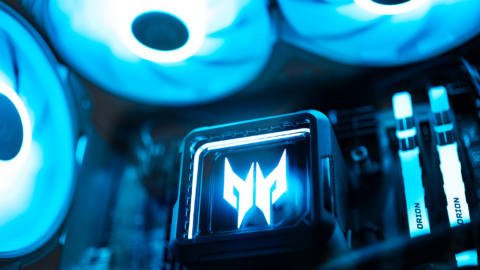
🖥️ The list in brief
1. Best overall
2. Best budget
3. Best 240Hz
4. Best 49-inch
5. Best 57-inch
6. Also tested
7. How we test
8. Where to buy
9. FAQ
Here's why you should consider the best ultrawide monitor for gaming for your next upgrade. One, an ultrawide aspect ratio makes for a more immersive gaming experience. Two, they're often less taxing on a graphics card than the more traditional sized screens. Three, you can find great ultrawide gaming monitors for an affordable price these days.
The best ultrawide monitor for gaming is the Alienware 34 QD-OLED. With a gloriously glossy OLED panel, it's able to deliver incredible vibrance and rich colours across its ultrawide panel size. The Alienware is often on sale, but if you want to spend less then the best budget ultrawide for gaming is the superb ASRock Phantom PG34WQ15R2B.
What earns a gaming monitor the ultrawide tag is the aspect ratio. The most readily available is 21:9, and most often displayed in a resolution of 3440 by 1440. Though you can go even wider with a 32:9 ultrawide, which range in resolution all the way from 3840 x 1080 to 5120 x 1440, and even 7680 x 2160. Phwoar.
Quick List
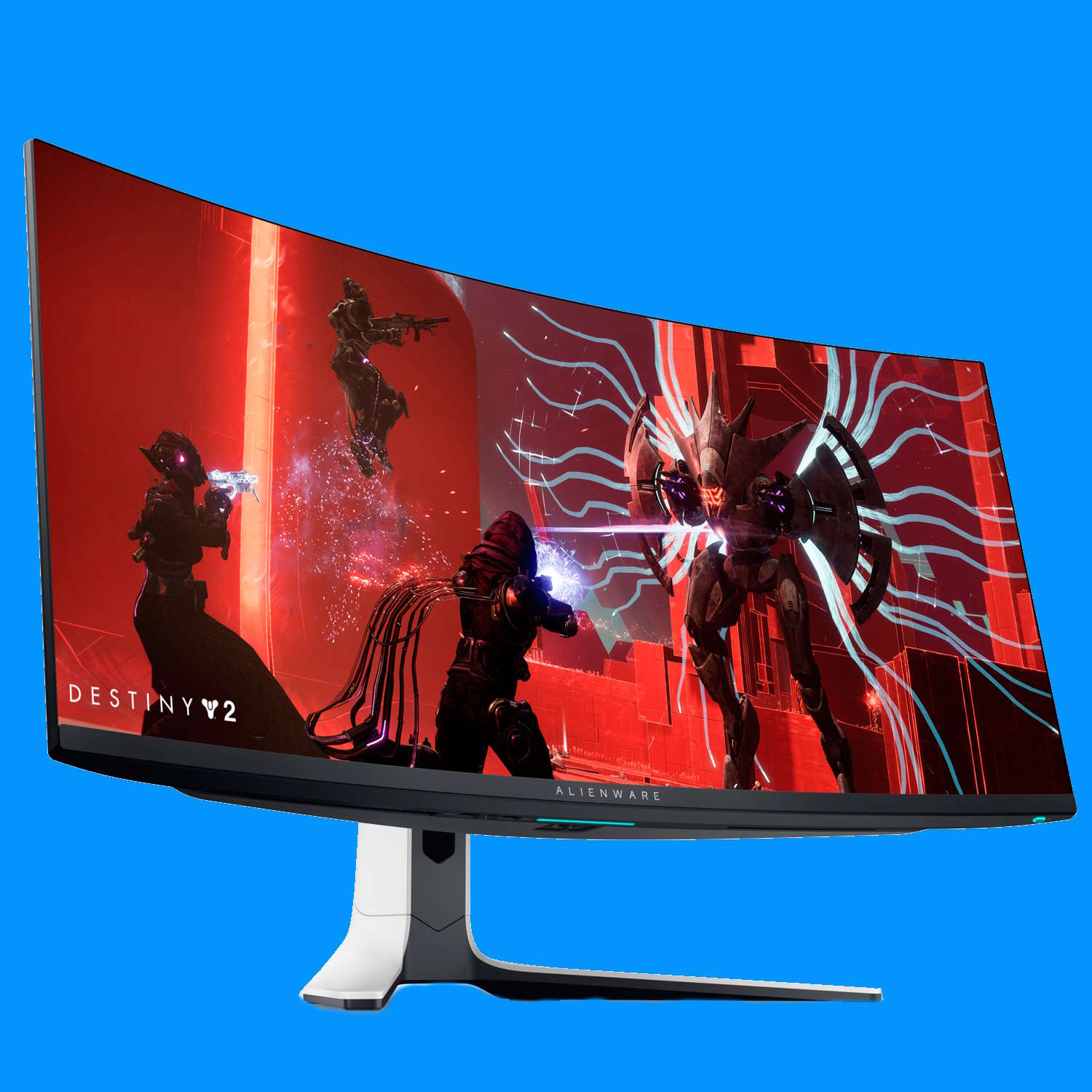 Best overall
Best overall
The best overall
The best ultrawide gaming monitor is the Alienware 34 QD-OLED, based on Samsung’s excellent OLED panel. Specifically we’re fans of this glossy (and often cheaper) version.
 Best budget
Best budget
The best budget
You get a whole lot of screen for your money with this excellent contender out of new entrant into the monitor market, ASRock. It’s not an OLED or anything fancy, but it’s frequently discounted and has all the specs we’re after.
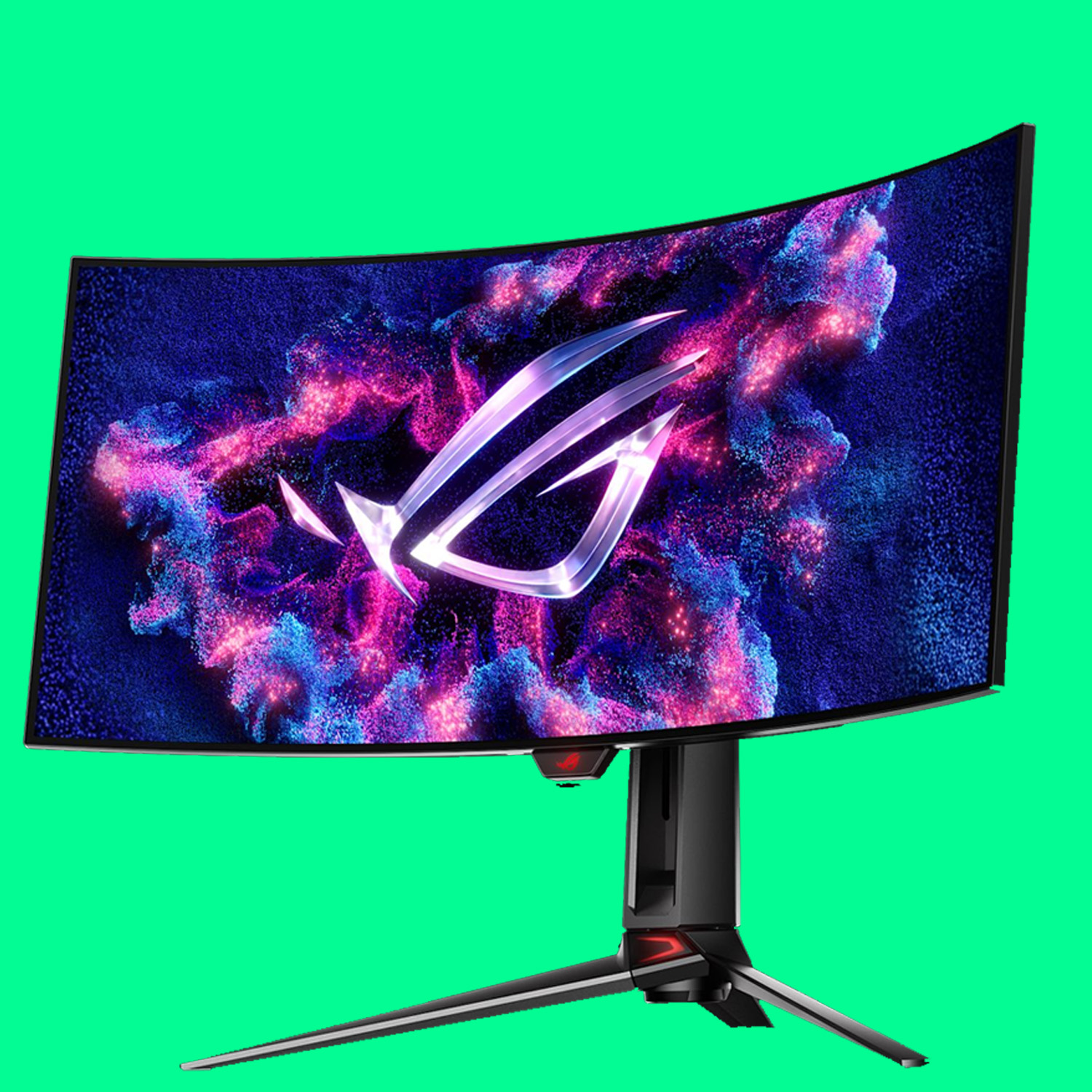 Best 240Hz
Best 240Hz
The best 240Hz
If speed is your game, the Swift should be your main. Monitor, that is. This is the best 240Hz ultrawide we’ve tested to-date, and it’s a mean OLED display with lots to offer.
 Best 49-inch
Best 49-inch
The best 49-inch
If you want a 32:9 aspect ratio and an OLED panel, you’re going to have to pay for it. Luckily, the OLED G9 really delivers on the goods to make it worthwhile.
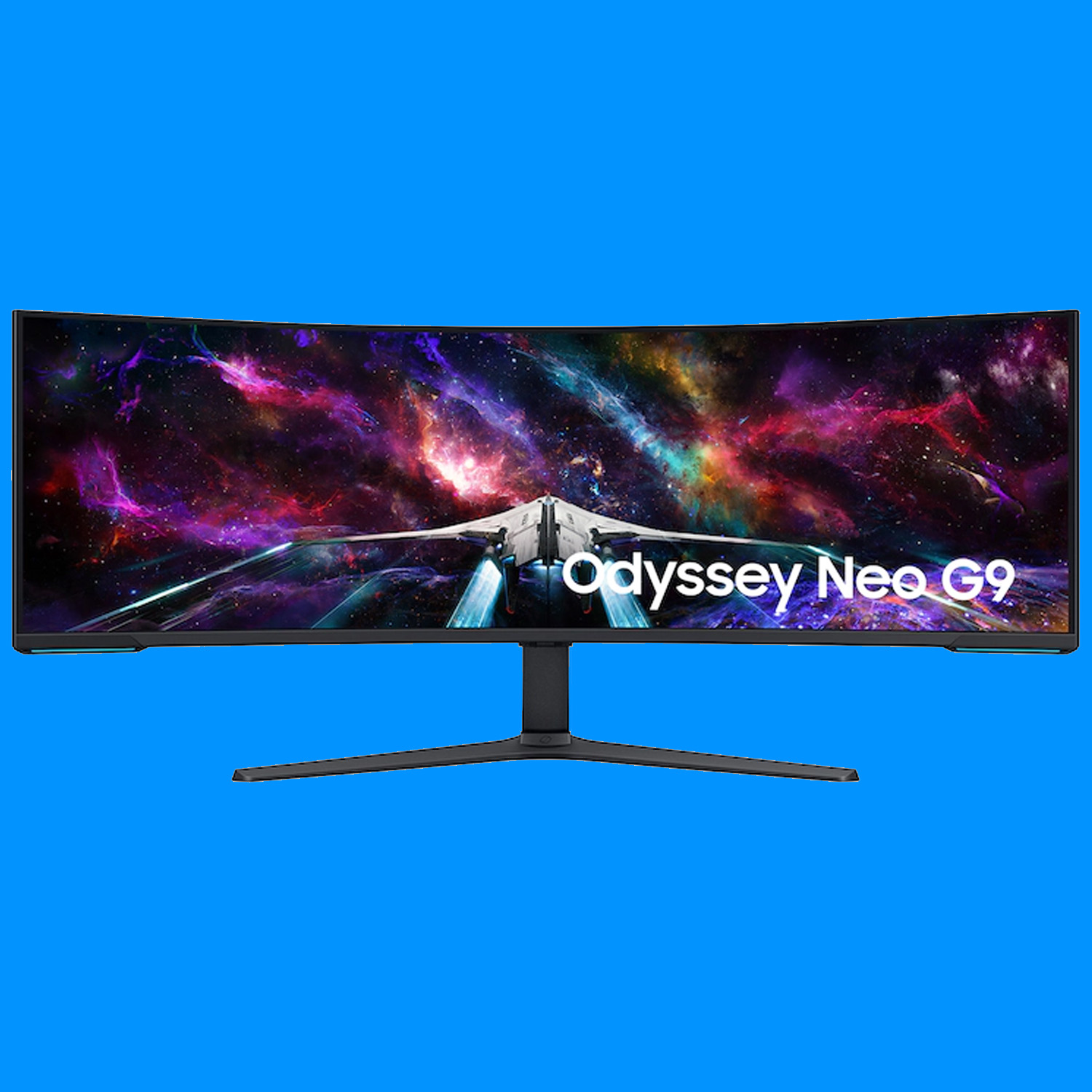 Best 57-inch
Best 57-inch
The best 57-inch
This dual-4K monster cannot be beat for its clarity or capability. It’s built with Mini-LED technology that delivers a punchy picture with a VA panel, but it’s really just excellent for being the widest of ultrawide gaming monitors around.
The best ultrawide monitor for gaming


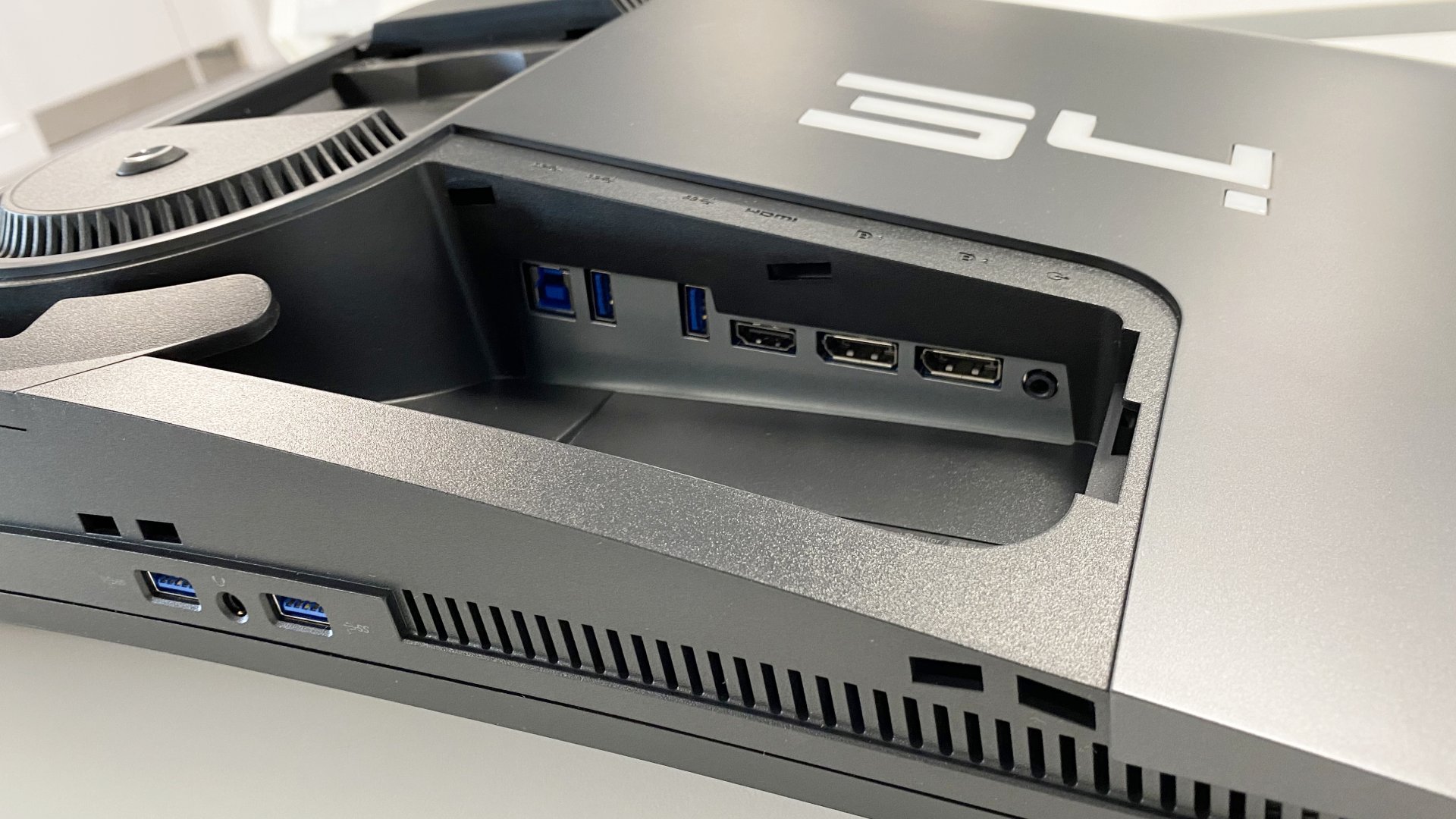
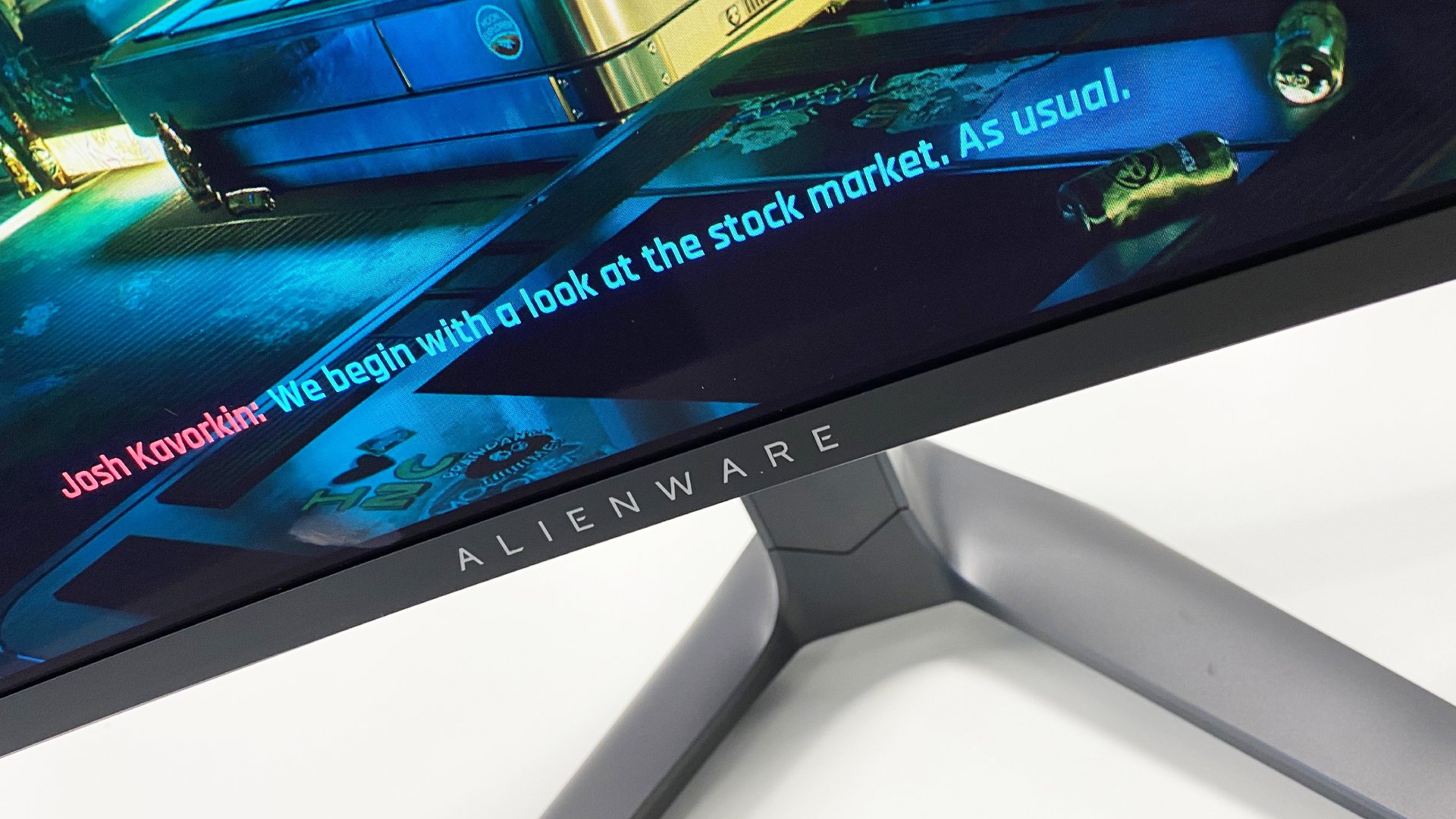


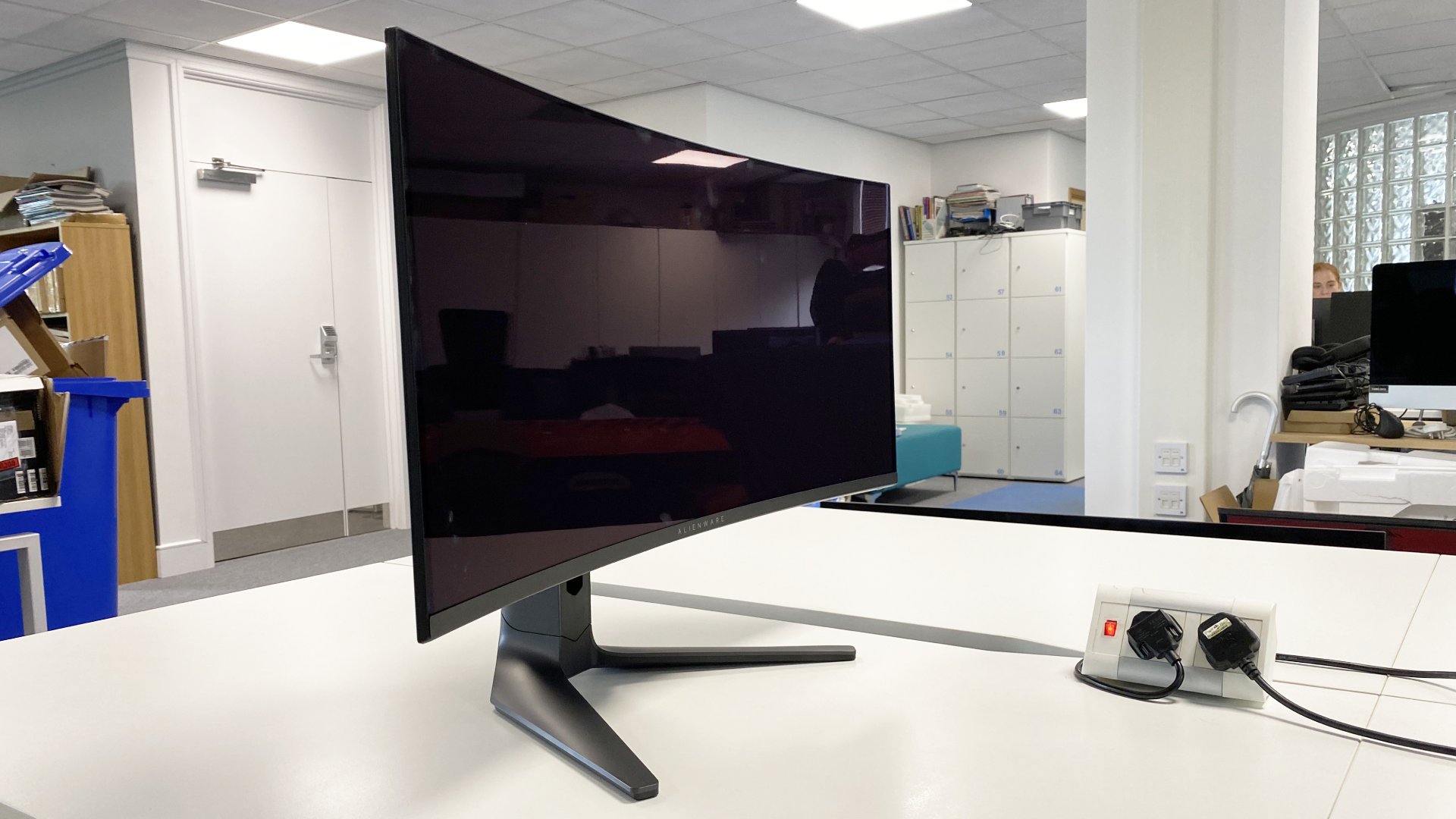
✅ You want the best ultrawide money can buy: This is an absolute all-rounder with a wonderful OLED panel, superb HDR performance, glossy finish, and ultra-fast pixel response.
❌ You're after detail through pixel density: You won't find the best pixel density on these sorts of ultrawide screens.
Not only is the Alienware 34 QD-OLED the best ultrawide monitor for gaming, it's quite simply the best gaming monitor today. With a 3440 x 1440 resolution, it's wide enough to be engrossing while gaming, but it also comes with the hot new thing in gaming monitors: an OLED panel.
Let's just take a moment to appreciate the Alienware 34 QD-OLED. It's an ultrawide OLED with a 0.1ms response time, 165Hz refresh rate, 3440 x 1440 resolution, 1000 nits peak luminance, and features AMD FreeSync Premium Pro. All that for a reasonable and frequently discounted price.
There are a two different models of Alienware 34 QD-OLED, the AW3423DW and AW3423DWF. We prefer the latter. It skips G-Sync support (though it still works great with Nvidia GPUs) and loses 10Hz from the refresh rate (not a biggie), but in exchange it is often going for less. Though the best bit is it ditches the matte finish for a glossy one. It might seem like a small detail, but the glossy finish is really what makes this OLED shine.
The glossy coat works a treat for bringing out the best of the OLED panel's deep black levels and wildly huge contrast ratio. It does wonders for the HDR gaming experience.
Beyond its luxurious panel and coating, this Alienware comes with a handy stand that doesn't take up too much space and is generally one of the finer looking monitors in the market. A couple negatives to bear in mind is that the pixel density isn't amazing due to the fact it's just a wider 1440p panel, despite the ultrawide nature of this screen making it feel more expansive. And, as with most OLEDs today, text clarity isn't a strong point. Similarly, you will have to be cautious of burn-in if you spend a ton of time on the desktop with static elements such as the taskbar always visible.
Nevertheless, the Alienware 34 QD-OLED is the best all-round monitor we've used to-date.
Read our Alienware 34 AW3423DWF review.
The best budget ultrawide monitor for gaming
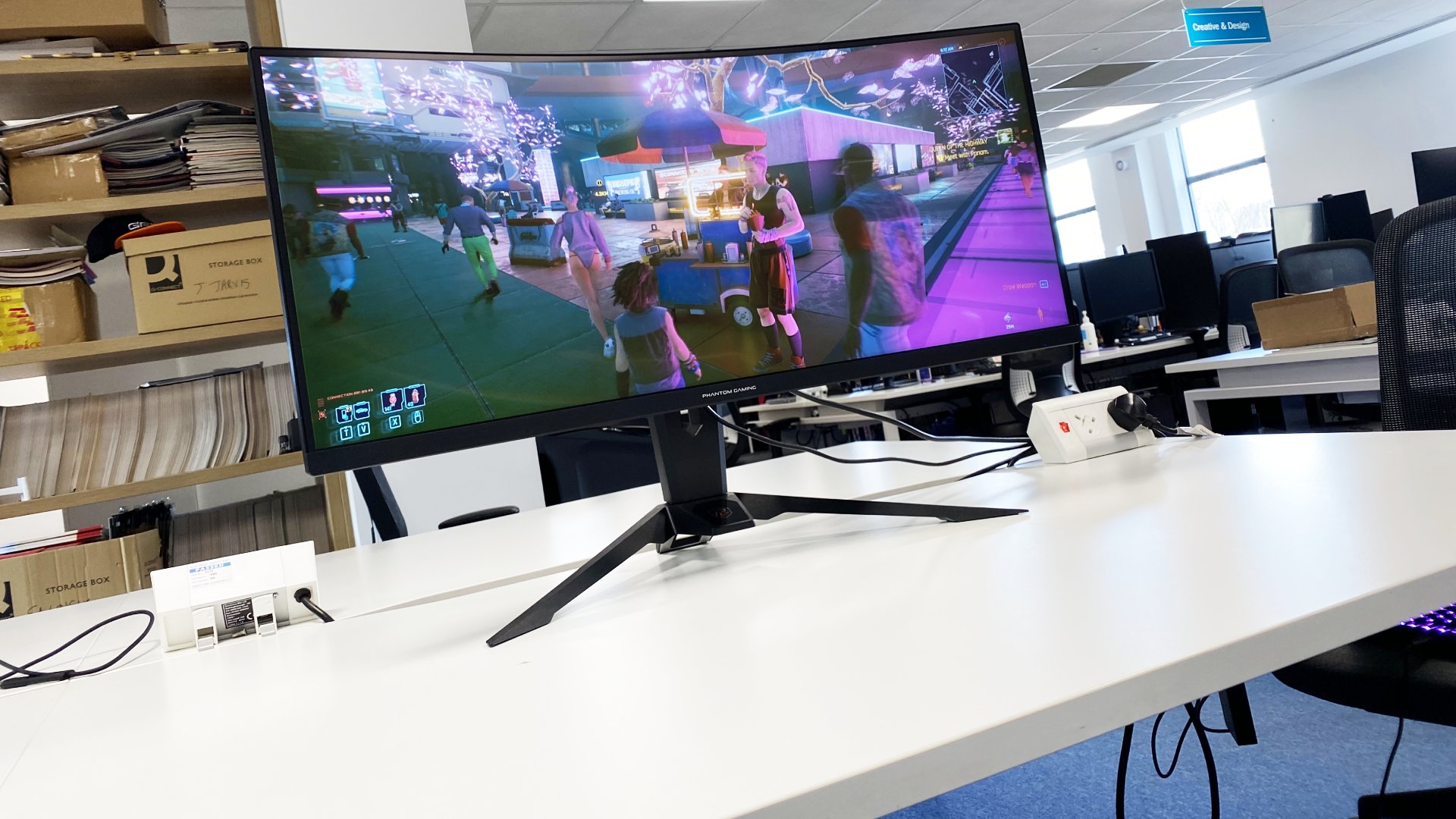
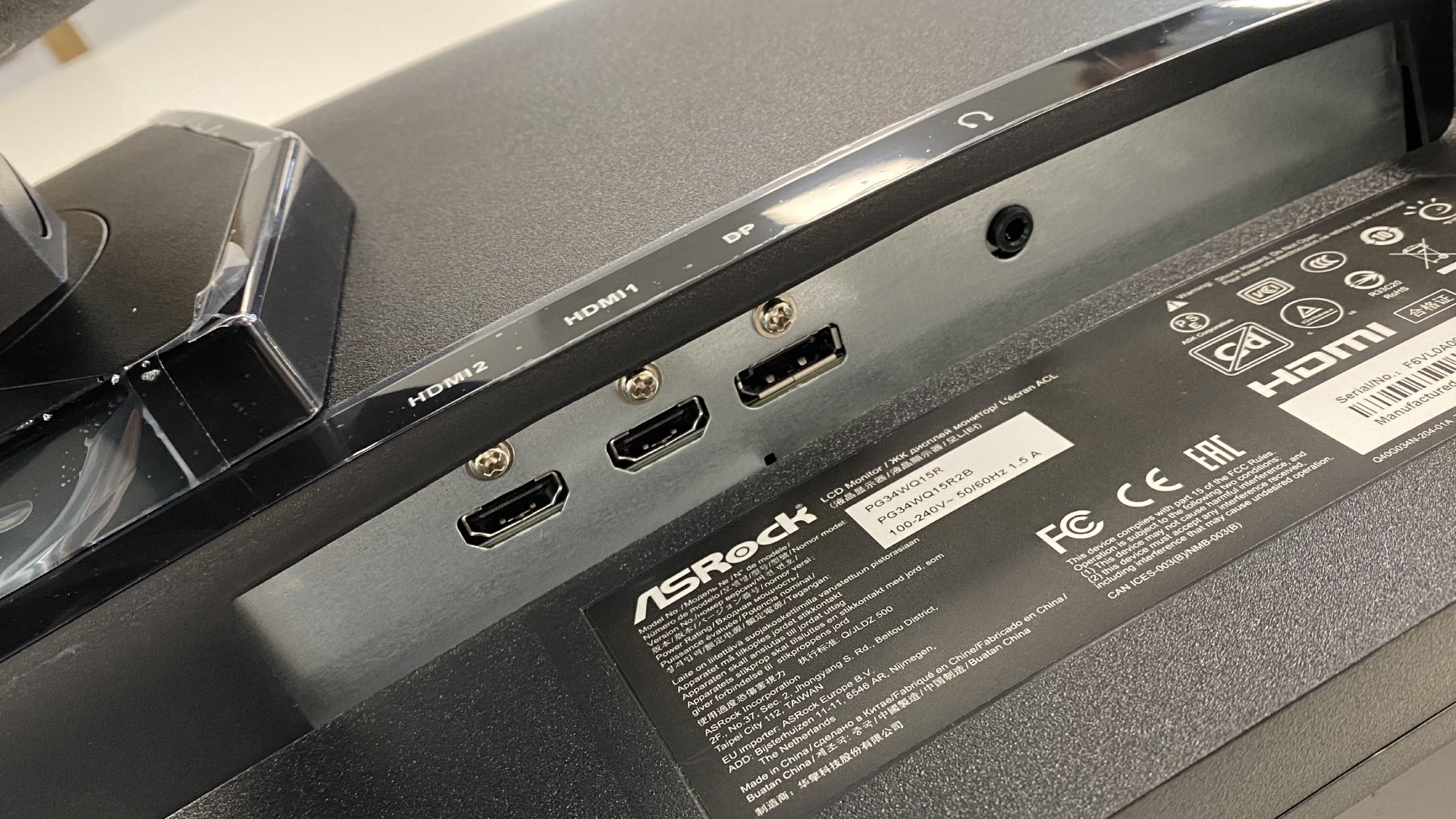
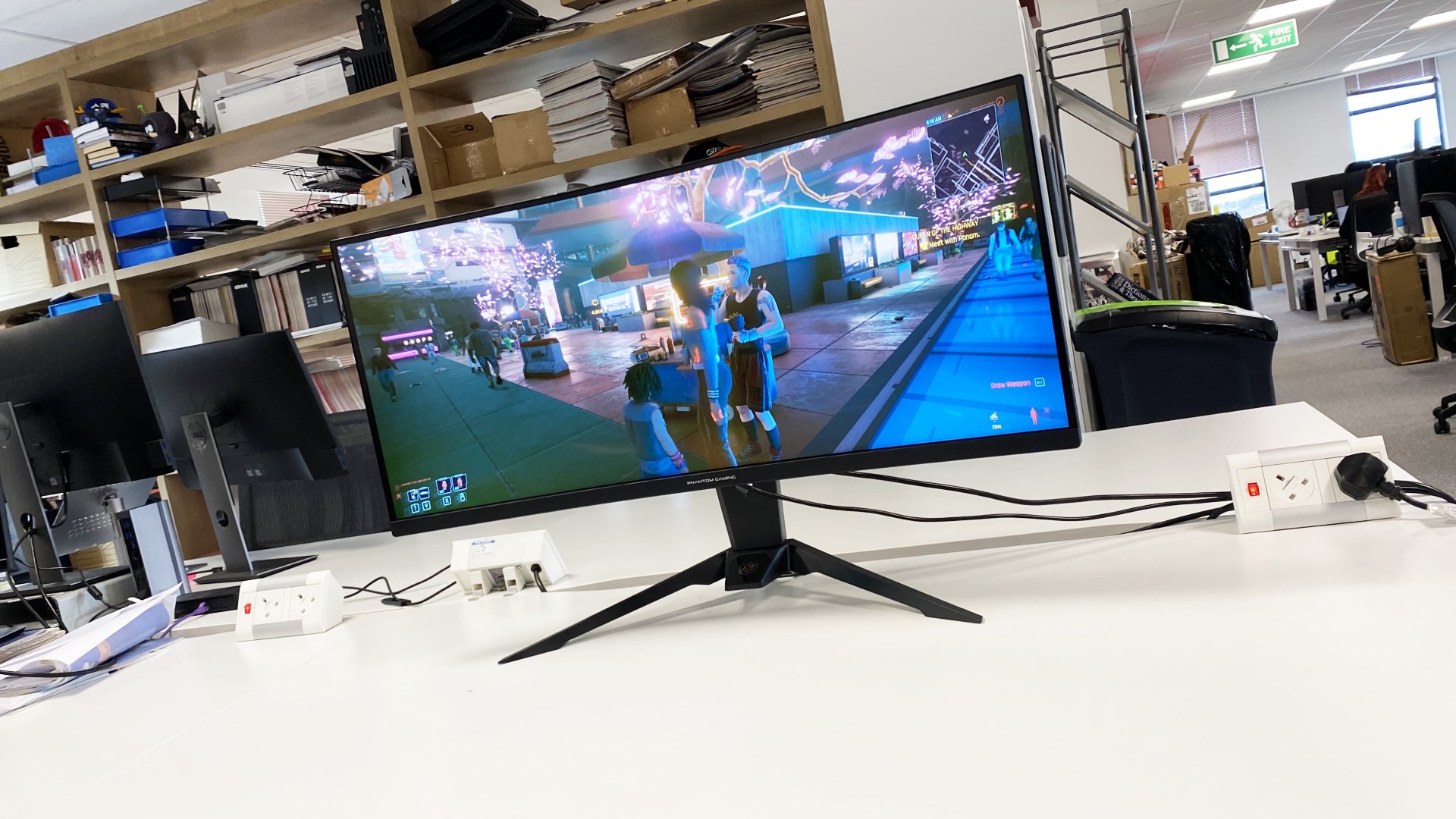

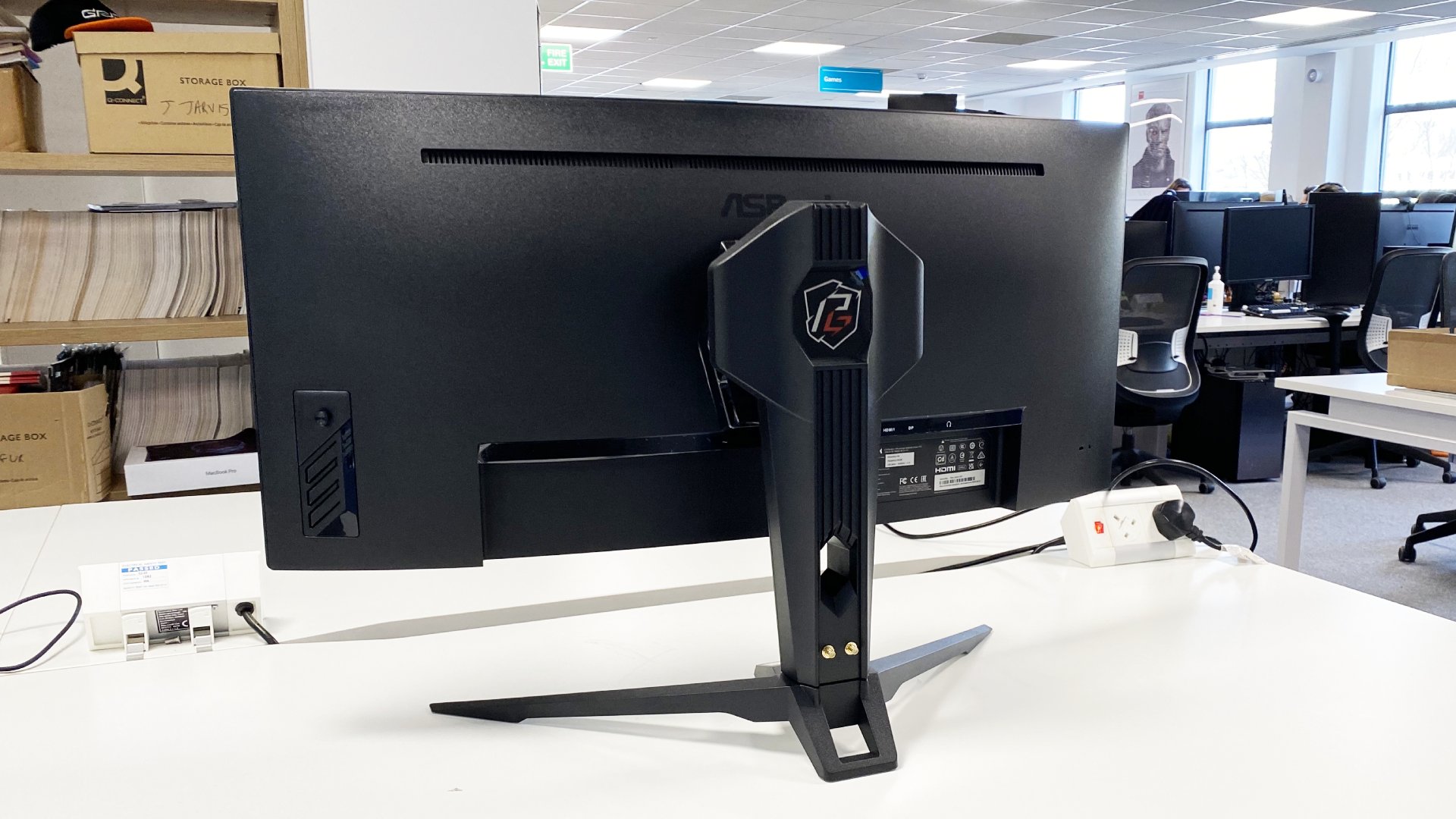
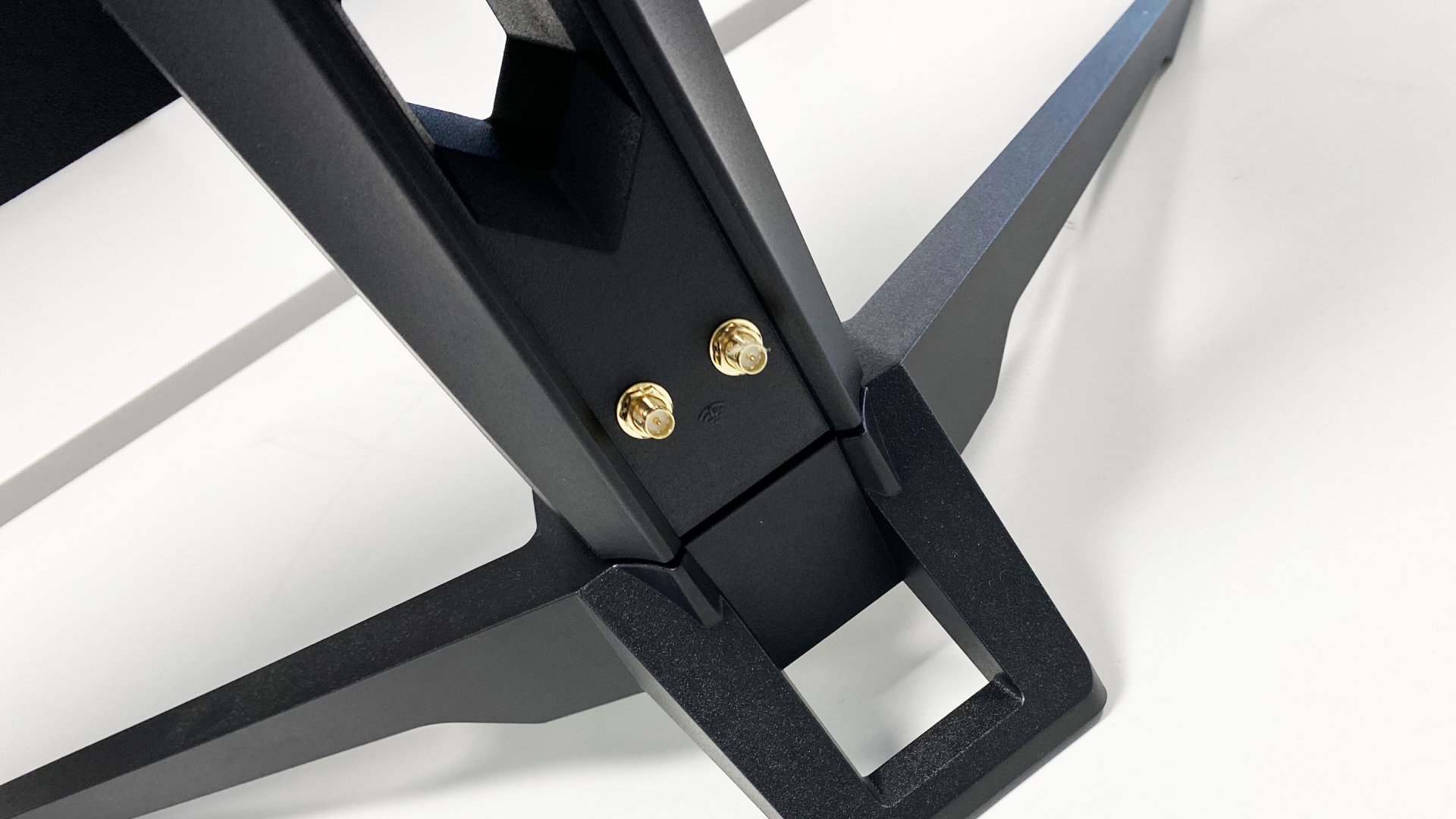
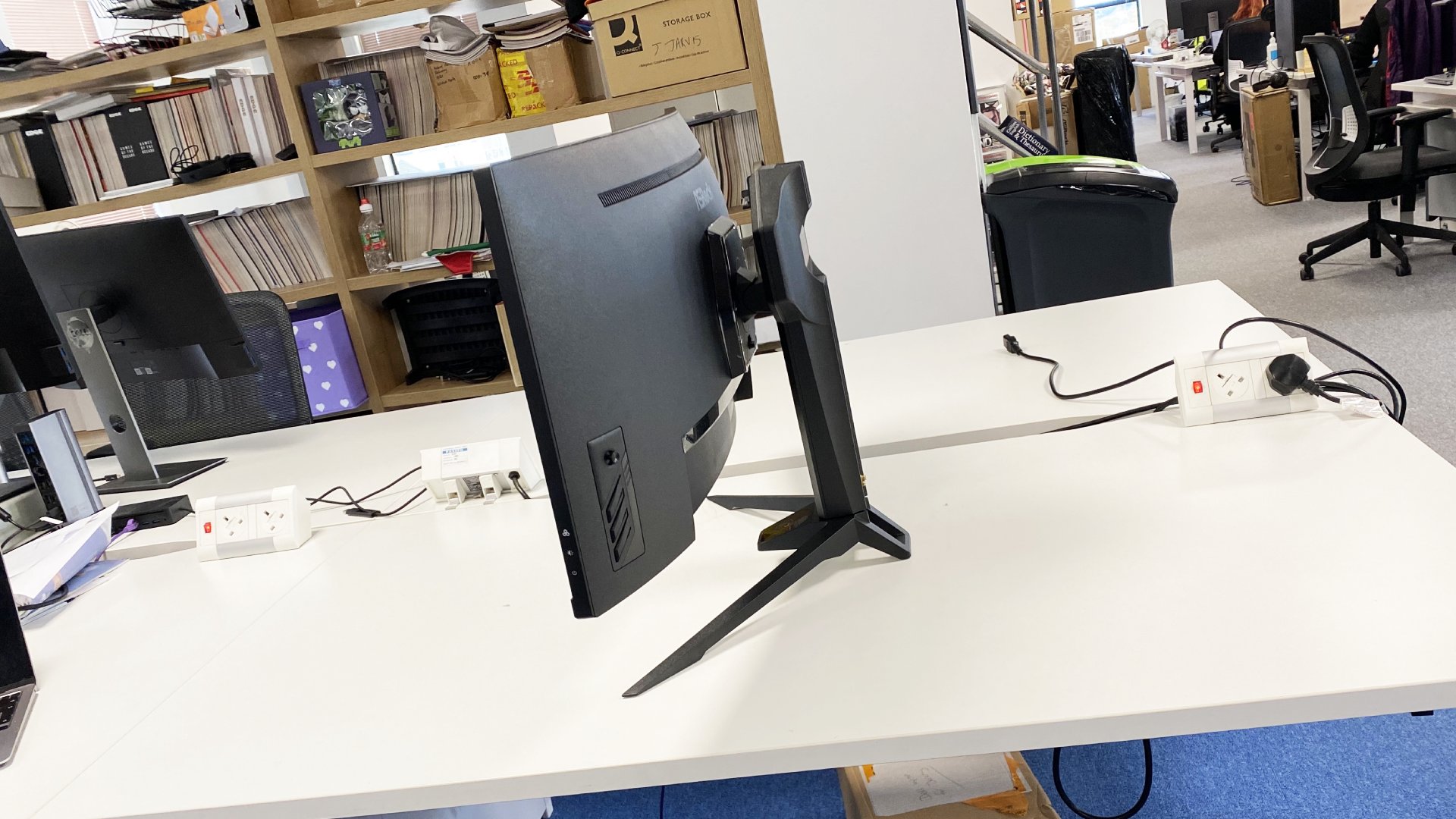
✅ You want the best budget ultrawide: Ultrawide can get expensive yet this one is frequently discounted. It also has an enviable specs sheet.
❌ You want the best out-of-the-box experience: ASRock's monitor needs a fair bit of tweaking and calibration to get it setup optimally for most games.
The best budget ultrawide is from a relatively new face on the gaming monitor scene. It's the ASRock Phantom PG34WQ15R2B. Despite not being around in the market for long, ASRock has decided to adopt some of the most confusing naming schemes for its monitors yet, but don't let that detract from this budget hero.
Don't lower your expectations too much, because the ASRock Phantom PG34WQ15R2B delivers a specs sheet not too dissimilar to the Alienware 34 QD-OLED above in a few ways: the 3440 x 1440 resolution and 165Hz refresh rate.
The VA panel on the PG34WQ15R2B is quite bright, considering its more affordable price tag, coming in with a 550 nits rating. That's enough to net it DisplayHDR 400 certification and a half decent HDR experience. The claimed coverage of 91% DCI-P3 is also pretty darn good.
Rounding out the rest of the spec, there's FreeSync Premium support for all your variable refresh rate needs (no good monitor in 2024 should be without) and the stand is surprisingly excellent. Usually the stand is a let-down on more affordable monitors, but this one offers all the movement you could ask for and doesn't demand much screen space.
All in, the PG34WQ15R2B really impressed us during testing and was a pleasure to play games with, and it's still very much in use in the PC Gamer office, too. Considering it starts out relatively cheap for this sort of spec and then is frequently discounted to sit as one of the cheapest ultrawide monitors for gaming around, we can't recommend it enough.
Read our full ASRock Phantom PG34WQ15R2B review.
The best 240Hz ultrawide monitor for gaming
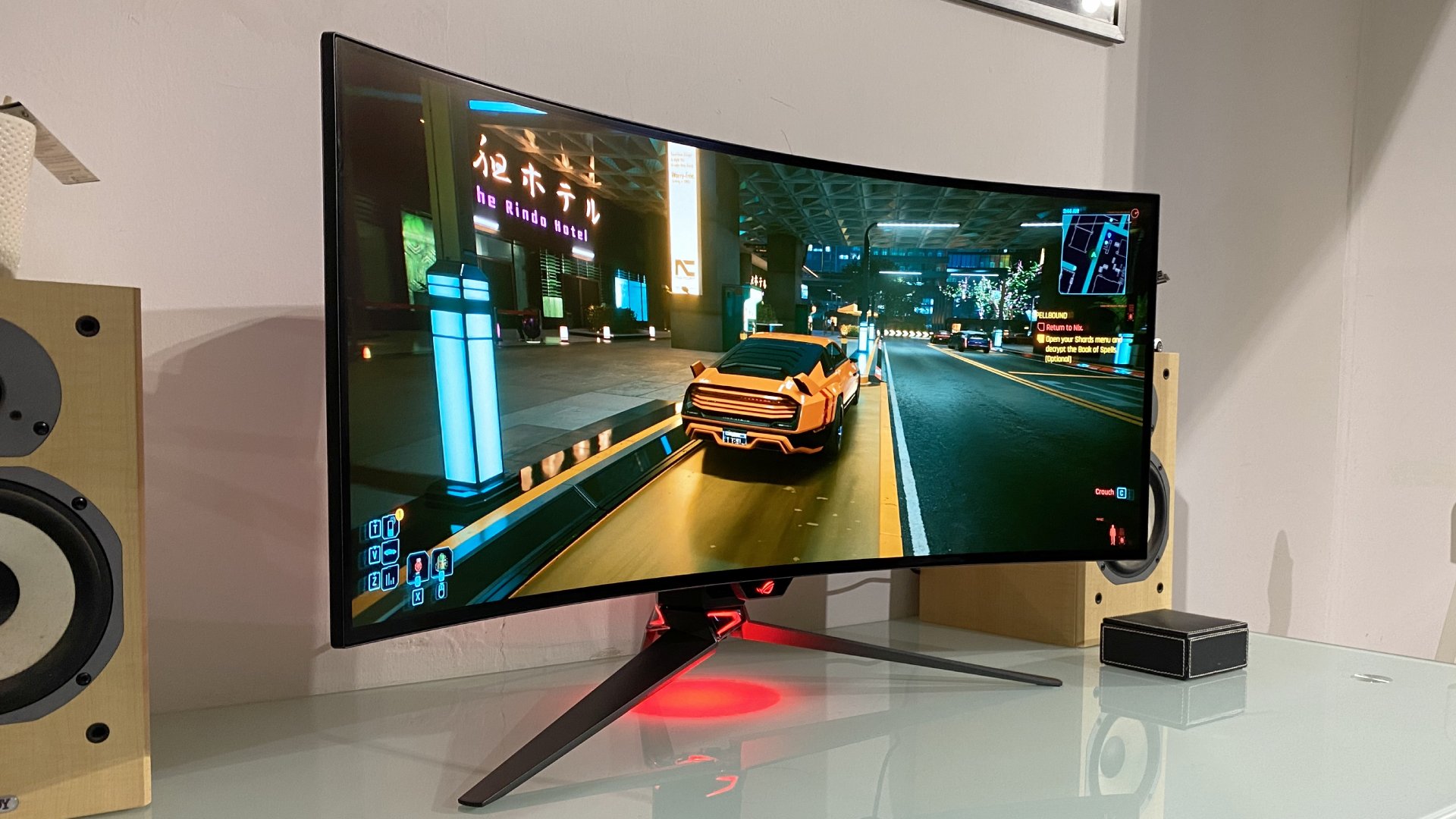
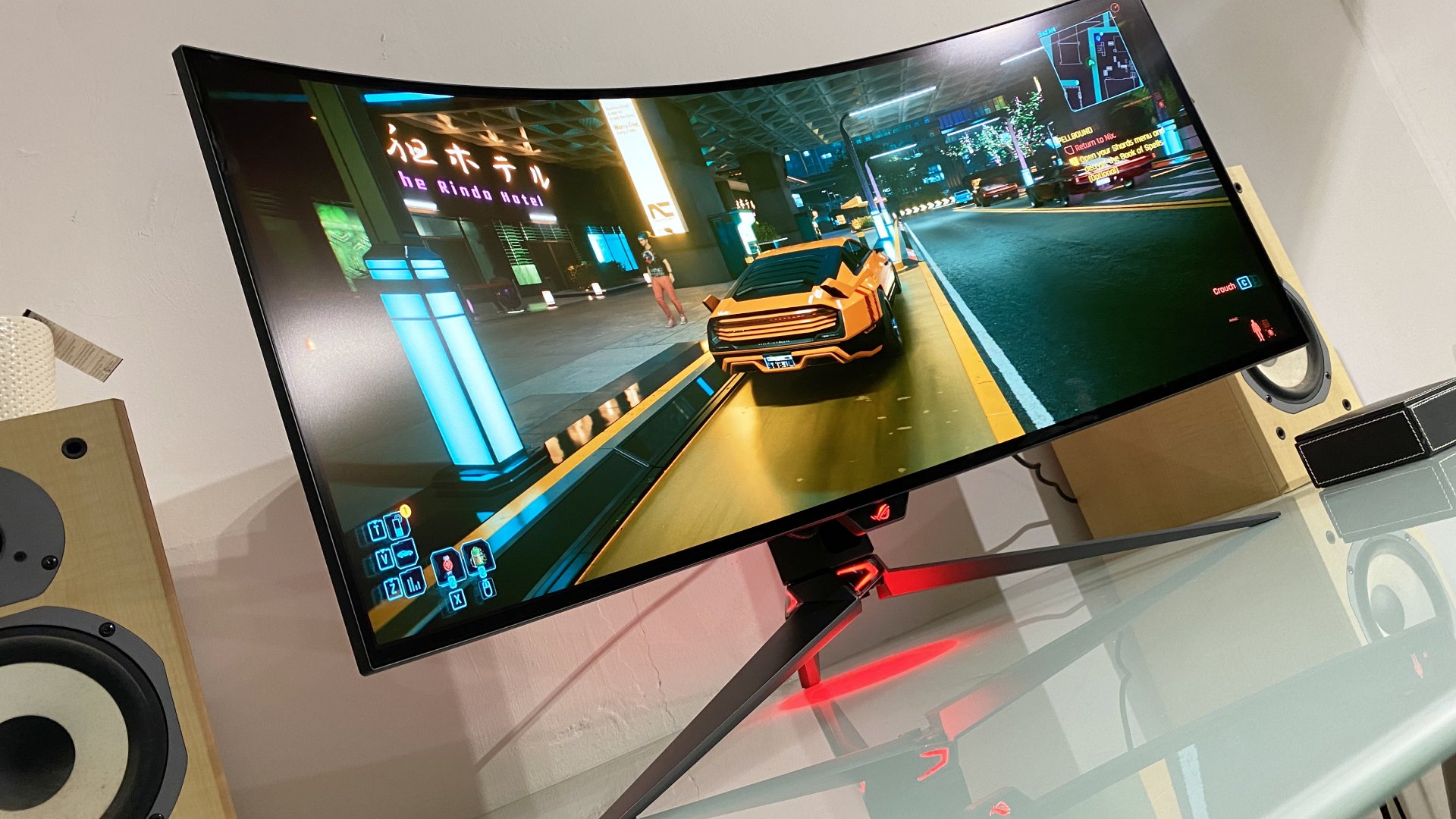
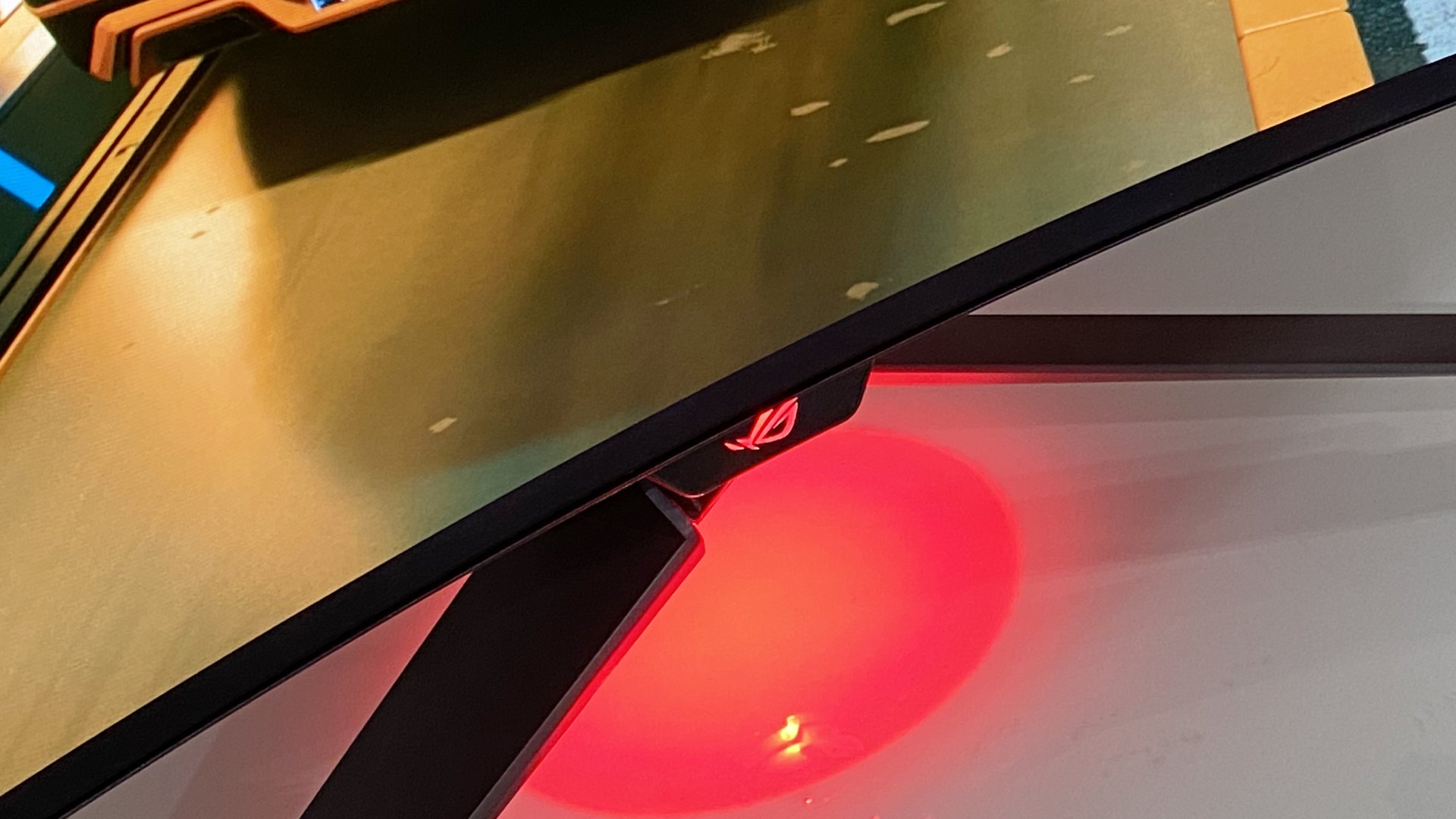
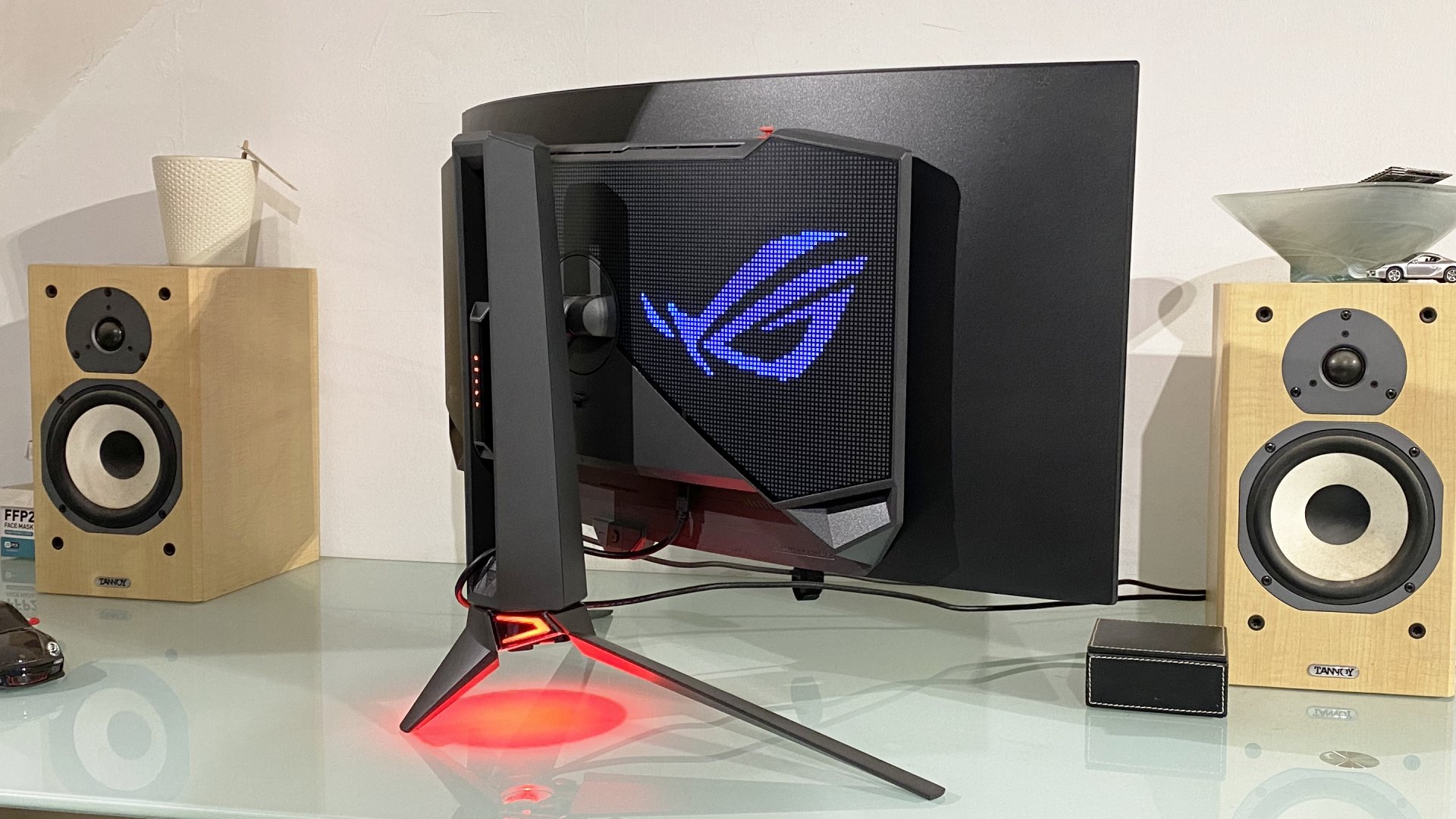
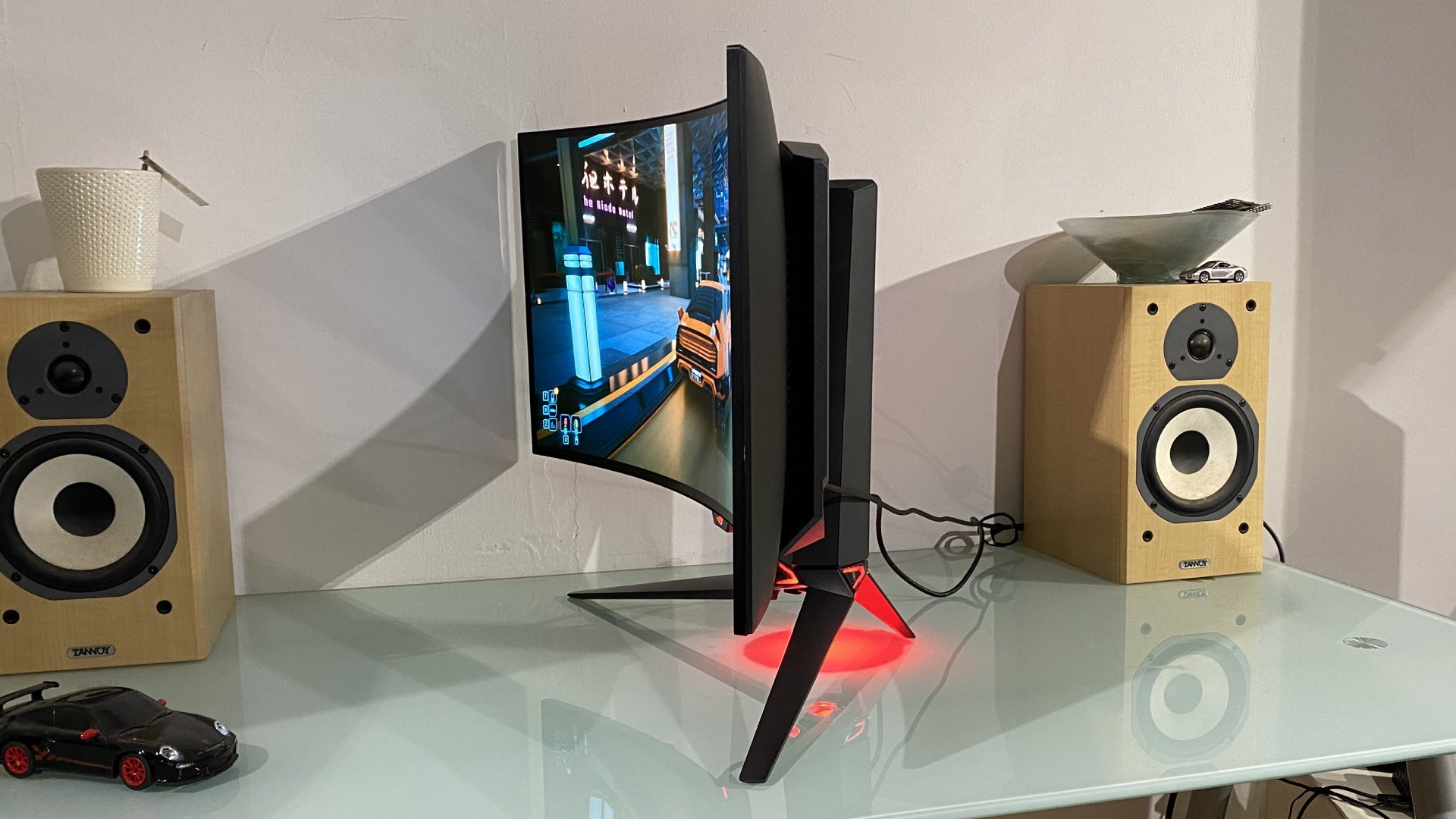
✅ You want an LG-powered OLED experience: LG's new second-gen MLA OLED panel is gorgeous and brighter than the last.
❌ You're expecting perfection: Even LG's latest OLED tech still has limitations, and it's usually more expensive than the QD-OLED alternative.
The best 240Hz ultrawide monitor for gaming is the Asus ROG Swift OLED PG34WCDM. This new arrival is one of just a few second generation OLED gaming monitors currently on the market, and it's fitted with one of LG's extremely fast WOLED MLA Gen 2 panels.
That LG panel scores you a 240Hz refresh rate with a 0.03ms response time. Yes, 0.03ms. To put it plainly, this panel is rapid in every sense.
A high-end graphics card is required to reach the advertised 240Hz refresh rate, and even the best graphics cards around might struggle in some games. Though the fact this is an ultrawide monitor with a standard 3440 x 1440 resolution helps. That's a lot fewer pixels than 4K in total.
Picture quality hasn't been sacrificed to deliver a stonking speed, however. If you've seen an LG OLED TV, you know that LG makes a mean screen. The Swift OLED PG34WCDM is no different. The second-generation OLED panel here makes a real difference to how images are displayed across it. It's vibrant and has a “bit more fundamental zing” than other LG OLEDs we've tested previously.
Though OLEDs do have their drawbacks. Burn-in is a real concern, even while this monitor employs measures to keep the risk of it happening to a minimum. Also the way OLED panels are created leads to some strangeness displaying text, and that seems to bother some people more than others. The other factor is cost. This Swift OLED PG34WCDM is even more expensive than our top pick for the best ultrawide monitor for gaming, by nature of it being newer. Here's hoping the price drops as much as the Alienware has so far, otherwise this speed machine won't get as much attention as it probably deserves.
Read our full Asus ROG Swift OLED PG34WCDM review.
The best 49-inch ultrawide monitor for gaming
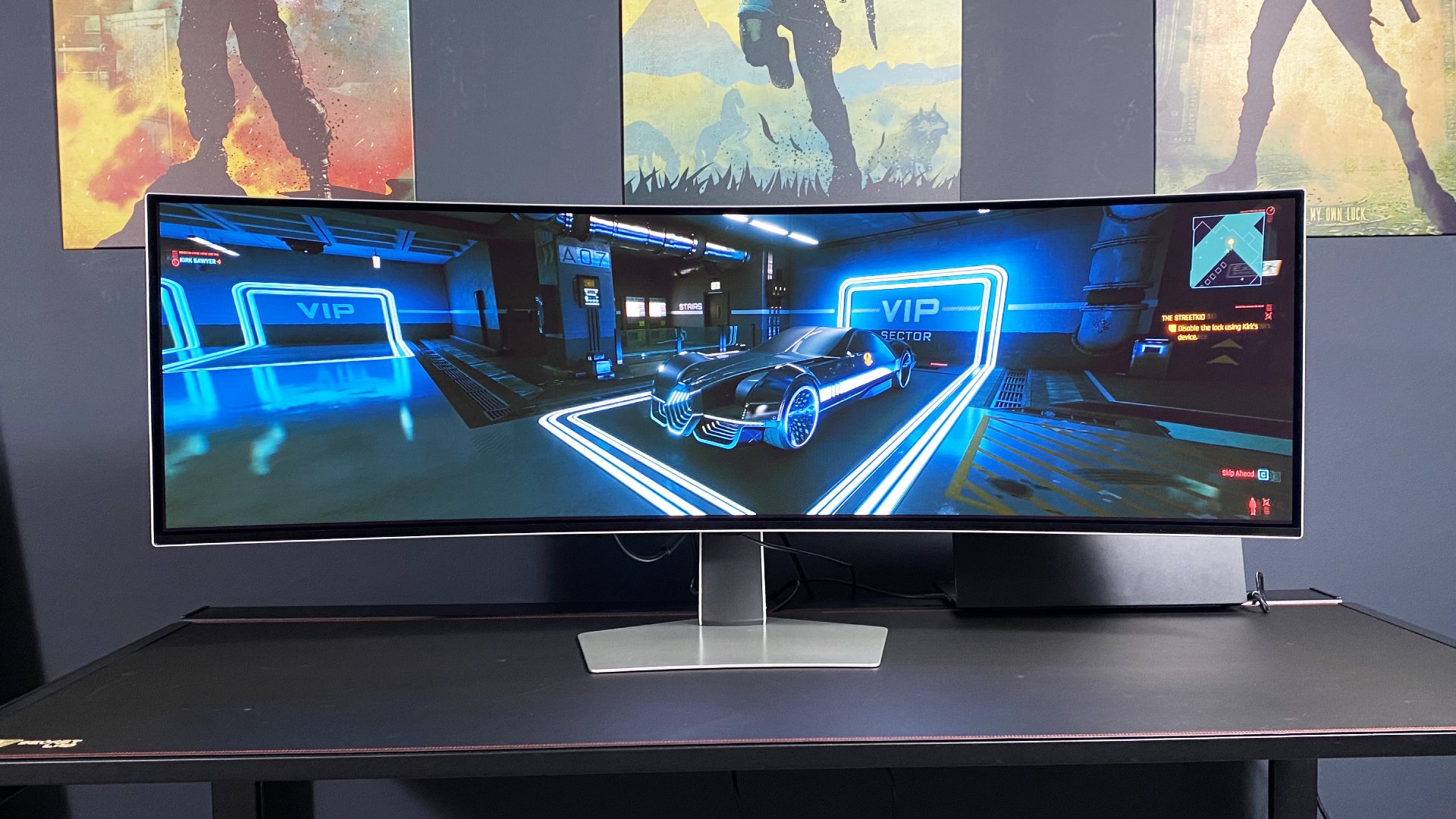


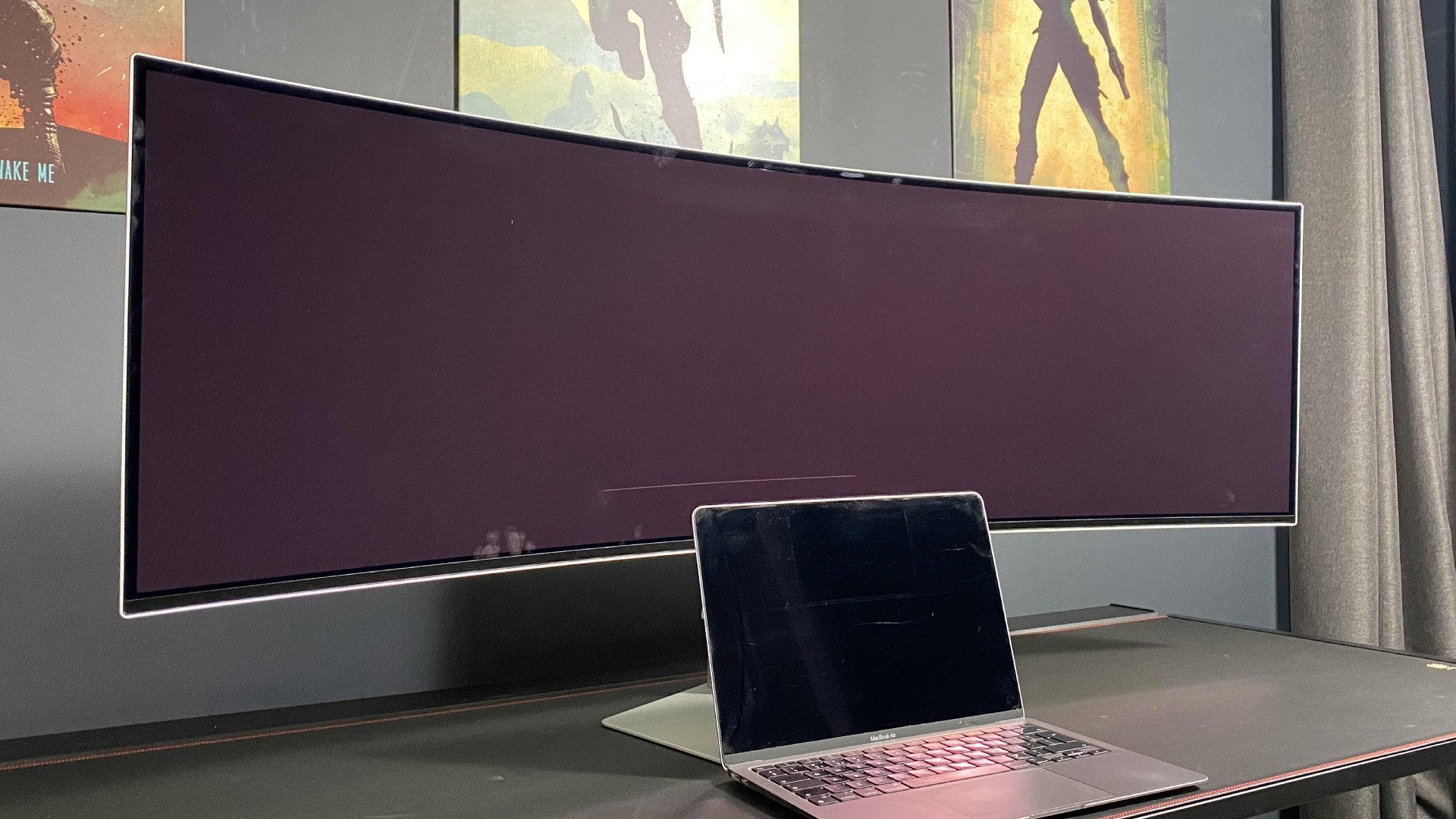

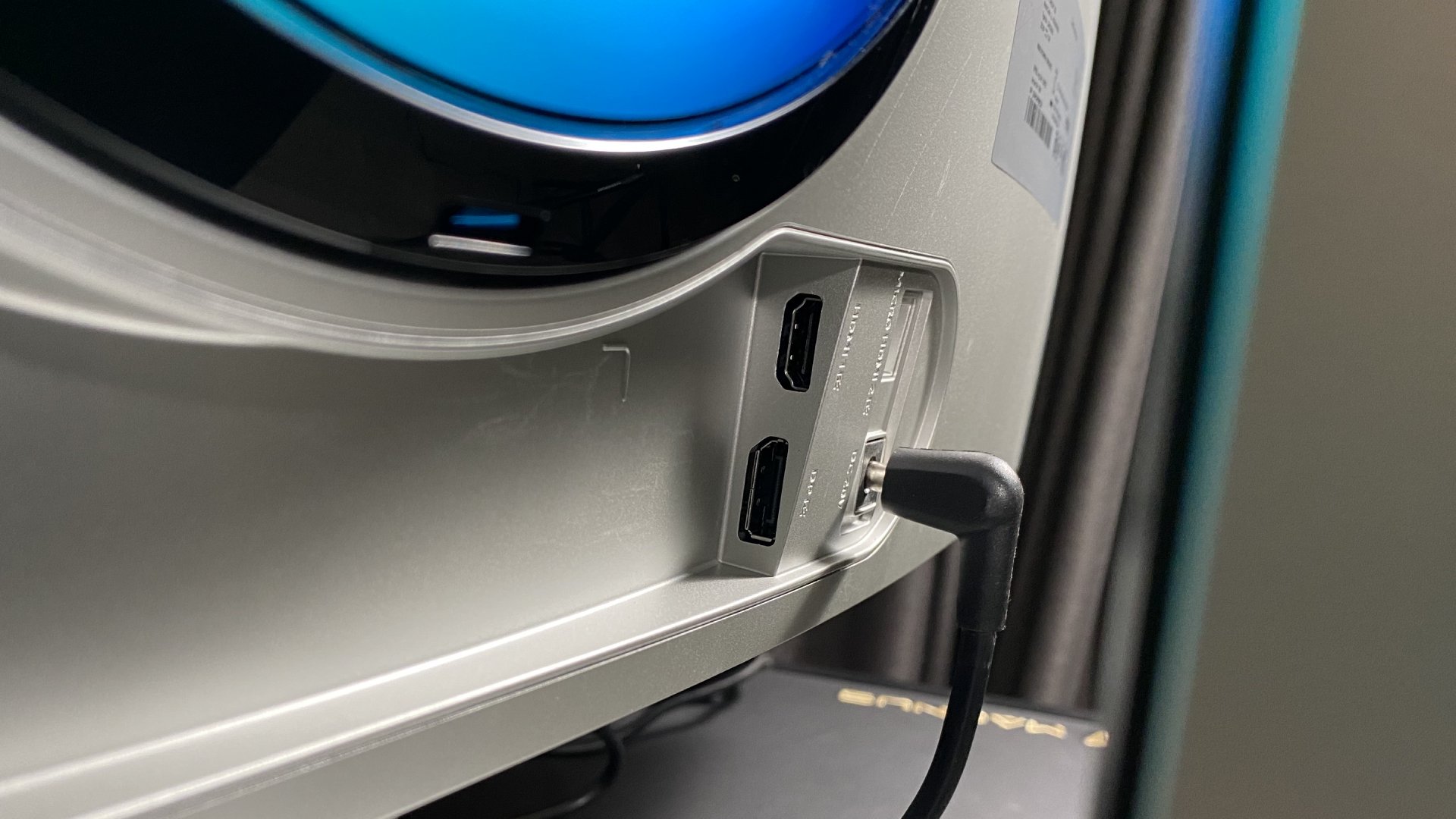
✅ You want the ultimate OLED experience: A 34-inch ultrawide OLED monitor is a more sensible option, but who cares about that, right?
❌ You want a monitor for work and play: The 32:9 aspect ratio isn't ideal for every game, but more importantly the OLED panel's quirks mean it's not the best at displaying text.
The best 49-inch ultrawide monitor for gaming is the Samsung Odyssey OLED G9 G93SC. That's the slightly cheaper version of the G95SC, which comes with some extra smart TV functionality that doesn't really matter much to us PC gamers. The core remains the same: an ultrawide OLED to blow your socks off.
With 49-inches of QD-OLED panel, the OLED G9 comes with a widened horizontal resolution than many other ultrawide gaming monitors at 5120 x 1440. That affords you ample room to explore your desktop or many Chrome tabs, or extremely wide gaming experiences that take up your entire eyeline.
This really is the most immersive ultrawide we've come into contact with. The combination of the incredible contrast and colours of an OLED screen combined with the 49-inch size is an enviable gaming experience in the games that support it. That's one thing to note: not every game will support such a horizontal resolution. The games that do, however, make for an amazing viewing experience on the OLED G9.
The OLED G9 is rated to 240Hz, which puts it right up there with the fastest ultrawide panel we recommend, the Asus ROG Swift OLED PG34WCDM. It's also importantly quicker than the Asus ROG Swift OLED PG49WCD that bears the same panel. And, while usually the OLED G9 costs more for it, we've seen it discounted to way less than its opposite number at Asus.
It is another extreme OLED, however, and that means the price is high. The ultrawide OLED market is where we're seeing our first glimpse of the newer screen technology in the market, but that also makes for high prices. Saving cash? Check out the ASRock Phantom PG34WQ15R2B instead.
Read our full Samsung Odyssey OLED G9 G93SC review.
The best 57-inch ultrawide monitor for gaming

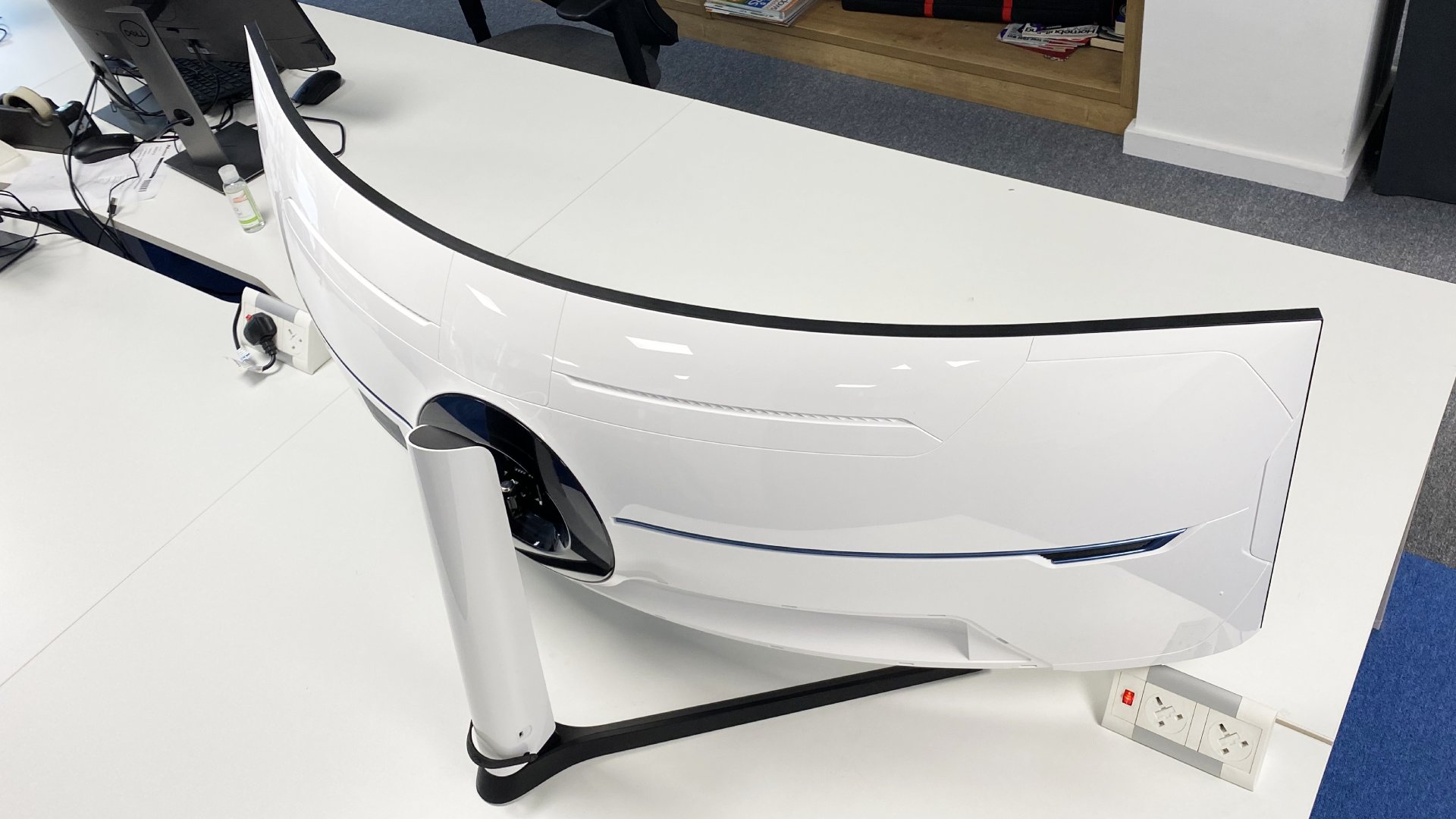

✅ You want the ultimate ultrawide gaming experience: This level of pixel density has never been available before on such a large screen and it's incredible to see.
❌ You like an OLED panel: Samsung has done a great job with Mini-LED here, and the pixel density makes for an absurdly clear picture, but it's not quite a match for an OLED in some ways, such as response time and contrast.
Excessive? Ludicrous? Absurd? These words mean nothing to the Samsung Odyssey Neo G9 G95NC Dual UHD. That's why it's our pick as the best 57-inch ultrawide monitor for gaming. It was a bit of a shoe-in for the accolade, however, as it may well be the only 57-inch ultrawide monitor for gaming in existence today.
That's not actually why the Neo G9 G95NC has a place in this guide, however. We made way for this megalithic monitor because it truly gives new meaning to the word 'ultrawide'. We thought it may be deserving of another title. Silly-wide, perhaps, but I don't think it'll catch on. Point is: it's huge, and it's not your usual resolution.
Breaking the mold for ultrawide gaming monitors, the Neo G9 G95NC comes with a resolution of 7680 x 2160. If you divide that first number by two you'll end up with a single 4K panel meaning, yes, this is two 4K panel's worth of pixels wrapped up into one.
The panel itself is a VA, not this fancy OLED tech, though the best 49-inch ultrawide monitor for gaming has you covered there. Actually what you get here is an equally fresh backlight technology, Quantum Mini-LED. So it's not entirely at a loss for brightness and beauty (DisplayHDR 1000!). You can expect a decent 1ms response time and decent contrast levels nonetheless, even if they come up short versus OLED in some ways. You don't have to worry about burn-in here, at least.
Rated to 240Hz, this is also one seriously quick monitor for gaming. You won't really be able to drive a game using the entire panel with any modern graphics card. Not in most modern games anyways—maybe something easy-going. But you'll most likely be using this screen in picture-by-picture mode to have two semi-discrete 4K panels next to one another. One for gaming, the other for Discord (or 'working').
What this extra wide boi does extremely well is clarity and detail. The pixel density, due to the exact sizing of two 4K panels side-by-side, is a match for a 32-inch 4K monitor at 140DPI. That's absurdly good, and you don't really get how nice it is to have that level of picture clarity across a 57-inch monitor until it's plonked in front of you.
But, of course, it is extremely expensive. That was always going to be the case, but it does sting to see that price tag start with a two.
Read our full Samsung Odyssey Neo G9 G95NC Dual UHD review.
Also tested

A gorgeous gaming experience that’s only let down by its inability to display text perfectly and the fact the faster Samsung OLED G9 is often cheaper.
PC Gamer score: 81%
For
- Absorbing picture quality
- Vivid colours
- Easier to drive than standard 4K
- Total immersion
Against
- Text fringing is still a nuisance
- Creaky
How we test gaming monitors

How does PC Gamer test gaming monitors?
Like everything else we test, we live with a gaming monitor in the same way you would at home. We make sure to use it for day-to-day monitor tasks on the Windows desktop—because your PC likely isn’t just for entertainment—and we test it while gaming, of course.
The Windows desktop will highlight any failings in factory calibration, and show up any issues with font scaling, too. It is also a good way to test the vagaries of whatever backlighting tech a panel is employing. Using a dark background and a light browser or Explorer window (or the other way around) is great for highlighting what a screen’s backlight will do as the level of brightness is demanded by what’s on the display.
It’s a good way to check out any auto brightness limiting (ABL) functions on a modern OLED display, too.
Using fast-paced shooters is a perfect way to test out the response of a given gaming monitor, and the neon-dripping world of Cyberpunk 2077 makes for an excellent HDR tester.
We also go through a series of experiential tests to highlight any ghosting, backlighting issues, or general smeariness or blurring of images. We find it too easy to get lost in the weeds of specific panel benchmarks and miss more obvious problems that might crop up during day-to-day gaming use.
So, we put more weight on what it’s like to actually use a gaming monitor than what the specs might say.
Where to buy a gaming monitor
Where are best gaming monitor deals?
In the US:
- Amazon – Money off high refresh rate gaming monitors
- Walmart – Save on quick gaming monitors
- B&H Photo – Gaming monitors for as little as $110
- Best Buy – Often Samsung gaming monitors going for less
- Target – LG and Asus gaming monitors on sale
- Staples – Regular sales on selected HP gaming monitors
- Newegg – Lots of cheap gaming monitors to choose from
- Dell – Money off Alienware gaming monitors
In the UK:
Ultrawide monitor FAQ
Are ultrawide monitors good for gaming?
Ultrawide monitors can have a huge impact on your gaming experience; either making them more immersive in a first-person shooter, or simply giving you extra screen real estate in strategy or turn-based games.
There was a time when you’d have to tweak a bunch of settings, or mess around in the .ini setttings files of games just to be able to get them running across the broad expanse of an ultrawide panel, but no more! Well, apart from Elden Ring…
Practically all other games are now set up to cater for 21:9 or even 32:9 aspect ratios out of the proverbial box.
You do need an ultrawide that’s dialed in for gaming, however, as any ol’ office ultrawide won’t quite cut it. What you’re looking for is a 120 Hz+ refresh rate and a native vertical resolution of at least 1440p. You should also be looking for either FreeSync or G-Sync compatibility, too.
Can ultrawide monitors split screen?
Some, but not all ultrawide monitors give you the option to have separate inputs for different parts of the screen. Normally, that’s a feature given over to the very widest of ultrawides, where you’re looking at effectively two panels side-by-side as in the 49- or 57-inch displays on our list here.
Can ultrawide monitors be 4K?
The short answer is no, not in the way that they can have a native resolution of 3840 x 2160 as that’s a strictly 16:9 aspect ratio. They can, however, exceed that in terms of the horizontal size of a panel.
What you want to be looking at is the second number in the resolution spec as that denotes the vertical height of a display’s resolution. If that number is 2160 or above, then you are looking at a resolution of above 4K, as in the Samsung Odyssey Neo G9 G95NC which is essentially two 4K gaming monitors side-by-side.
Do ultrawide monitors affect fps?
Because of the extra width added to an ultrawide, 21:9 resolution you will see some extra demand on your graphics card in terms of the frame rate. That being said, however, this is less impact going from a 2560 x 1440 screen to a 3440 x 1440 ultrawide than if you were upgrading to a strictly 4K, or 3840 x 2160 display.
It’s a question of the number of pixels the GPU is having to deal with, and simply multiplying the two values of a resolution spec together will give you that pixel count. And you can easily see how much more of a step up it is going to 4K rather than a standard ultrawide res.






